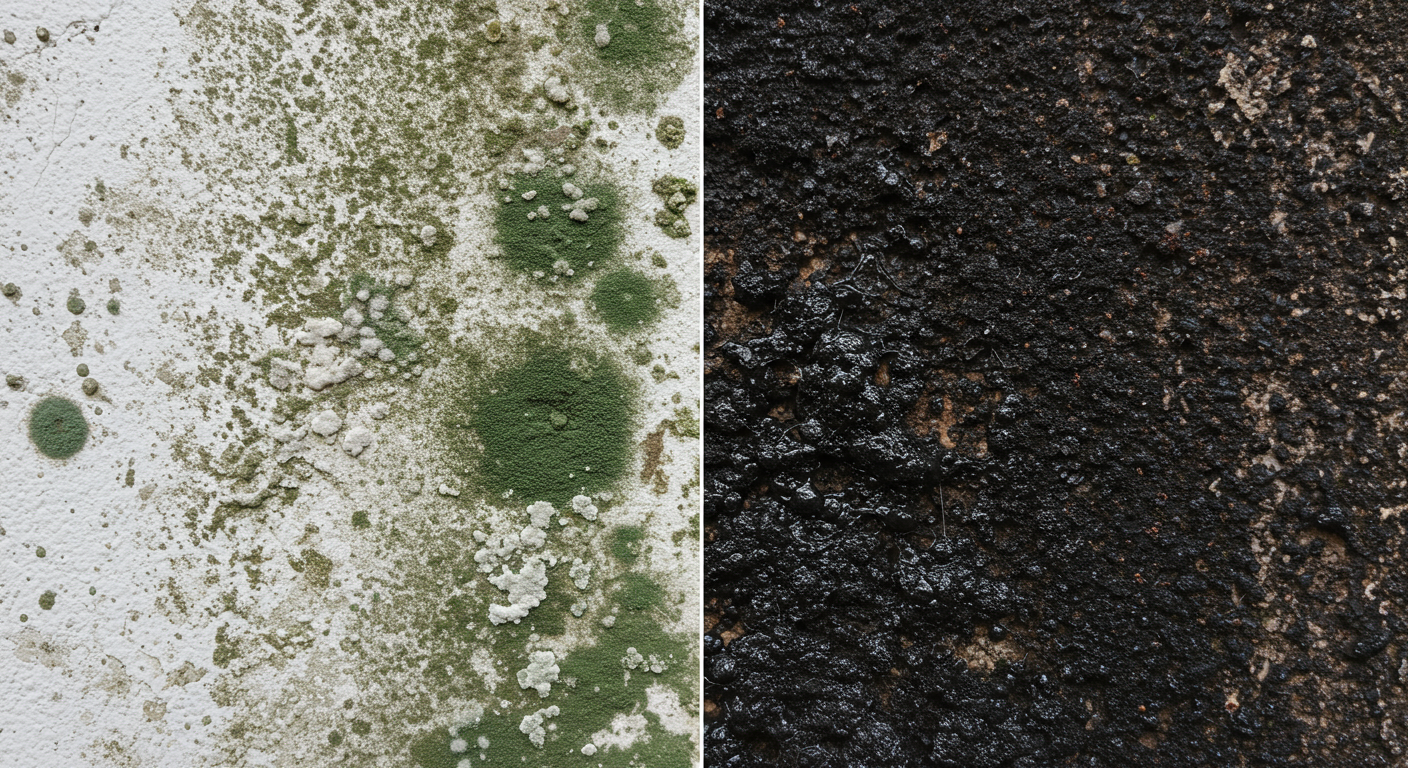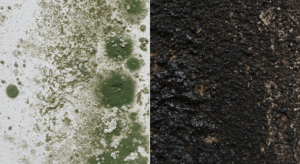Mold is a common household issue that can pose significant health risks if left unaddressed. However, not all molds are created equal. While some types of mold are relatively harmless, others, like black mold, can be toxic and dangerous. In this article, we’ll explore the key differences between regular mold and black mold, their health implications, and how to prevent mold growth in your home.
What is Regular Mold?
Characteristics and Appearance
Regular mold refers to the common types of mold found in homes, such as Cladosporium, Penicillium, and Aspergillus. These molds typically appear in various colors, including green, white, and gray. They often have a fuzzy or slimy texture, depending on the moisture levels in their environment. Regular mold thrives in damp, dark areas and spreads quickly if not addressed.
Common Locations for Growth
Regular mold is most commonly found in areas with high humidity or moisture. Bathrooms, kitchens, basements, and areas near leaking pipes or windows are prime locations. Mold spores can settle on surfaces like wood, drywall, and fabric, making these areas susceptible to infestation.
Health Risks Associated with Regular Mold
While regular mold is not as toxic as black mold, it can still cause health problems, especially for individuals with allergies or respiratory conditions. Symptoms may include sneezing, coughing, skin irritation, and watery eyes. Prolonged exposure can exacerbate asthma and other respiratory issues.
What is Black Mold?
Characteristics and Appearance
Black mold, scientifically known as Stachybotrys chartarum, is a toxic mold that poses serious health risks. It is typically dark green or black in color and has a slimy texture. Black mold thrives in areas with excessive moisture and poor ventilation, often growing on materials like wood, paper, and drywall.
Health Risks of Black Mold
Black mold is notorious for its severe health implications. Exposure to black mold can lead to symptoms such as chronic coughing, fatigue, headaches, and even neurological issues in extreme cases. It produces mycotoxins, which can be particularly harmful to individuals with weakened immune systems, children, and the elderly.
Identification Techniques
Identifying black mold requires careful observation and, in some cases, professional testing. Look for dark patches in areas prone to moisture, and pay attention to musty odors. If you suspect black mold, it’s crucial to address the issue promptly to prevent health risks and structural damage.
Comparative Analysis: Regular Mold vs. Black Mold
Toxicity Levels and Health Implications
The primary difference between regular mold and black mold lies in their toxicity levels. While regular mold can cause mild allergic reactions, black mold is significantly more dangerous due to its production of mycotoxins. These toxins can lead to severe health problems, making black mold a more urgent concern.
Growth Conditions and Environments
Both types of mold require moisture to grow, but black mold thrives in areas with consistent water damage or prolonged dampness. Regular mold can grow in less extreme conditions, such as areas with occasional humidity or condensation. Understanding these differences can help in identifying and addressing mold issues effectively.
Cleaning and Remediation Strategies
Removing regular mold can often be done with household cleaning solutions and proper ventilation. However, black mold requires more stringent measures, including professional remediation. Attempting to clean black mold without proper equipment can spread spores and worsen the problem.

Preventing Mold Growth in Your Home
Importance of Moisture Control
Moisture is the primary factor that contributes to mold growth. Controlling humidity levels in your home is essential to prevent both regular and black mold. Use dehumidifiers, fix leaks promptly, and ensure proper ventilation in high-moisture areas like bathrooms and kitchens.
Tips for Effective Mold Prevention
- Regularly clean and inspect areas prone to moisture.
- Use mold-resistant paint and materials in vulnerable areas.
- Ensure your home has proper drainage to prevent water accumulation.
- Keep indoor humidity levels below 50%.
When to Seek Professional Help
If you notice persistent mold growth despite your efforts, it’s time to call in professionals. Experts can conduct thorough inspections and provide effective remediation strategies to ensure your home is mold-free. For example, you can explore services like Comprehensive Mold Plan for Littleton, CO: Effective Remediation and Prevention Strategies to address your mold concerns.
Understanding the differences between regular mold and black mold is crucial for maintaining a safe and healthy home. By identifying the type of mold and taking appropriate measures, you can protect your family from potential health risks and prevent costly damage to your property. Stay proactive, and don’t hesitate to seek professional help when needed.




